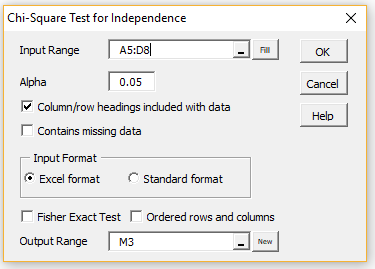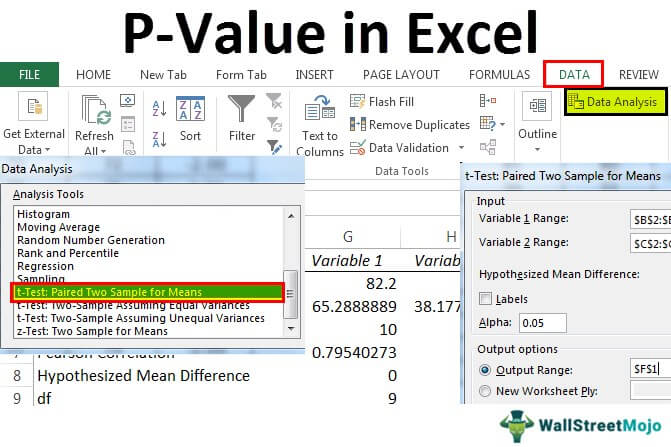
Run a t test in excel for mac how to#
Your advice was a God-send and I have a better understanding of how to present my data in my discussion section. I’m on the last leg of my statistical analysis for that Red Drum survey I had mentioned yesterday. Enter B5:E13 in the Input Range, check Column headings included with data, select the Levene’s Test option and click on the OK button. A dialog box similar to that shown in Figure 1 of Confidence Interval for ANOVA appears. To use this tool for Example 1, enter Ctrl-m and select Single Factor Anova from the menu. This option displays the results of all three versions of Levene’s test. Real Statistics Data Analysis Tool: A Levene’s Test option is included in the Single Factor Anova data analysis tool. This function ignores any empty or non-numeric cells.įor example, for the data in Example 1, LEVENE(B6:E13) = LEVENE(B6:E13, 0) = 0.90357 (referring to Figure 1).

If the second argument is omitted it defaults to 0. If type = 0 then group means are used if type > 0 then group medians are used if type < 0 then 10% trimmed group means are used. LEVENE(R1, type) = p-value for Levene’s test for the data in range R1.

Real Statistics Function: The following supplemental functions contained in the Real Statistics Resource Pack compute the p-value for Levene’s test. Also, a more liberal cut off value when testing homogeneity of variances is often used due to the poor power of these tests. Some cautions about Levene’s test: You need to assume that the absolute values of the residuals satisfy the assumptions of ANOVA. Another choice may be better based on knowledge of the underlying distribution of the data. Using the mean provided the best power for symmetric, moderate-tailed, distributions.Īlthough the optimal choice depends on the underlying distribution, the definition based on the median is recommended as the choice that provides good robustness against many types of non-normal data while retaining good power. They performed Monte Carlo studies that indicated that using the trimmed mean performed best when the underlying data had a heavy-tailed distribution and the median performed best when the underlying data had a skewed distribution. Brown and Forsythe extended Levene’s test to use either the median or the trimmed mean. Levene’s original paper only proposed using the mean. By power, we mean the ability of the test to detect unequal variances when the variances are in fact unequal. By robustness, we mean the ability of the test to not falsely detect unequal variances when the underlying data are not normally distributed and the variables are in fact equal. The three choices determine the robustness and power of Levene’s test. Use of 10% trimmed mean (replace mean by 10% trimmed mean above).Use of median (replace mean by median above).Use of mean (as in the explanation above).There are three versions of the Levene’s test:


05 = α (Figure 1), we cannot reject the null hypothesis, and conclude there is no significant difference between the 4 group means, and so the ANOVA test conducted previously for Example 2 of Basic Concepts for ANOVA satisfies the homogeneity of variances assumption. If the group variances are equal, then the average size of the residual should be the same across all groups.Įxample 1: Use Levene’s test to determine whether the 4 samples in Example 2 of Basic Concepts for ANOVA have significantly different population variances. For Levene’s test of the homogeneity of group variances, the residuals e ijof the group means from the cell means are calculated as follows:Īn ANOVA is then conducted on the absolute value of the residuals.


 0 kommentar(er)
0 kommentar(er)
